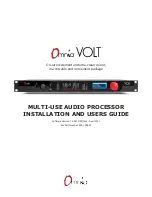
MOTOROLA
Optimizing DSP56300/DSP56600 Applications
4-1
This section
describes the main
DMA features and
how they can be
used to enhance
performance.
Section
4
USING THE DMA
4.1
INTRODUCTION
The DSP56300 DMA is a powerful functional block for moving data.
It has special registers and data paths that enable it to perform
various transfer tasks without stalling the core. It's main features
are:
• Parallel operation with the core
• Complex address calculation modes
• Transfer triggered by peripheral events, external interrupts
or software
• Transfer end may trigger other transfers or interrupt the core
• Transfer modes support flexible triggering for “words”,
“lines” and “blocks”
This section provides some application examples for using the
DMA functions. It assumes basic familiarity with the DMA. For
detailed information about the DMA see
Section 8
of the
DSP56300 Family Manual
.
Note:
Although may of the DMA registers can be used as general
purpose registers if not otherwise used, do not use the
control registers for general purpose data, otherwise an
accidental activation of a transfer may result.
4.2
CONSERVING CORE MIPS BY WORKING IN
PARALLEL
The DMA has data and address busses that are separate from the
core and independent address generation capability. This enables it
to work completely in parallel with the core, as long as the DMA
unit and the core do not contend for the same resource.
















































